|


256-bit encryption
$500,000 protection

|
NOAA REUBEN LASKER R-228
NOAA Reuben Lasker is a National Oceanic and
Atmospheric Administration fishery research
vessel.
She was
commissioned as the fifth of a class of five of the most
advanced fisheries research vessels in the world, with a
unique capability to conduct both fishing and
oceanographic research. In addition to her crew of 24,
Reuben Lasker can accommodate up to 15 scientists.
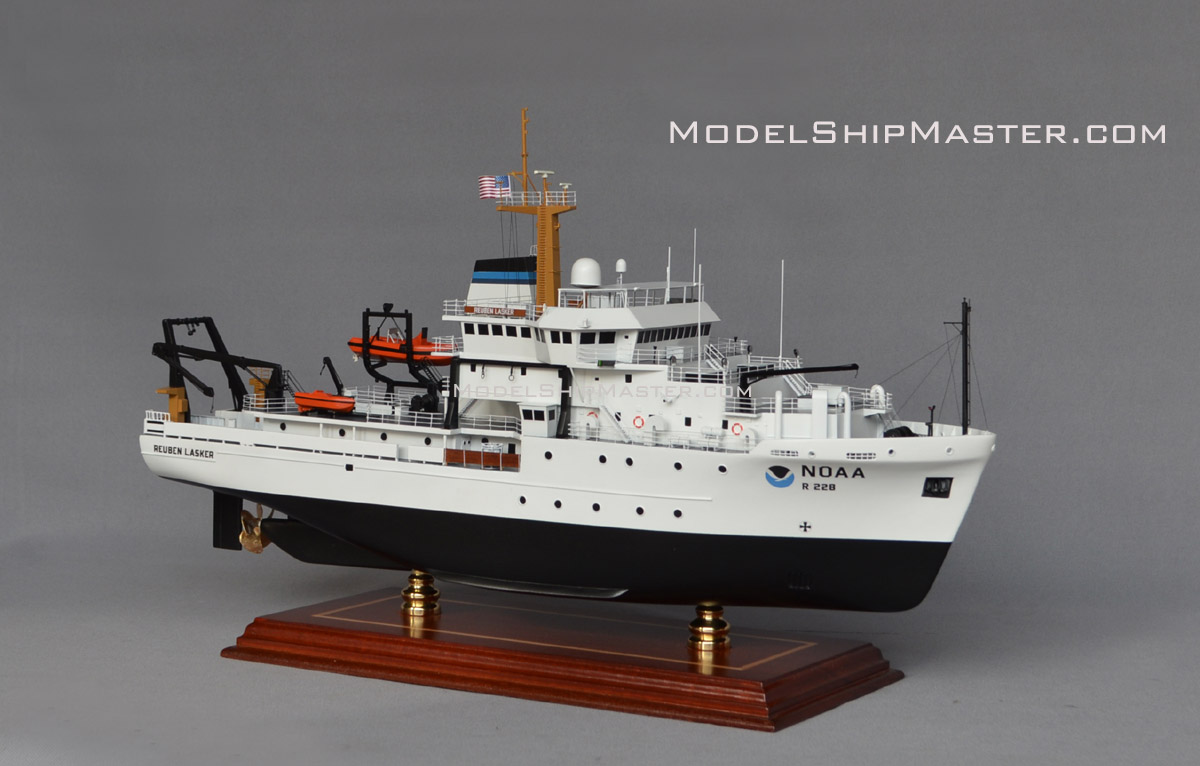
The NOAA Reuben
Lasker
is a stern trawler
with fishing capabilities similar to those of commercial
fishing vessels. She is rigged for longlining and trap
fishing and can conduct trawling operations to depths of
11,483 feet. Her most advanced feature is the
incorporation of United States Navy-type acoustic
quieting technology to enable NOAA scientists to monitor
fish populations without the ship's noise altering the
behavior of the fish, including advanced quieting
features incorporated into her machinery, equipment, and
propeller.
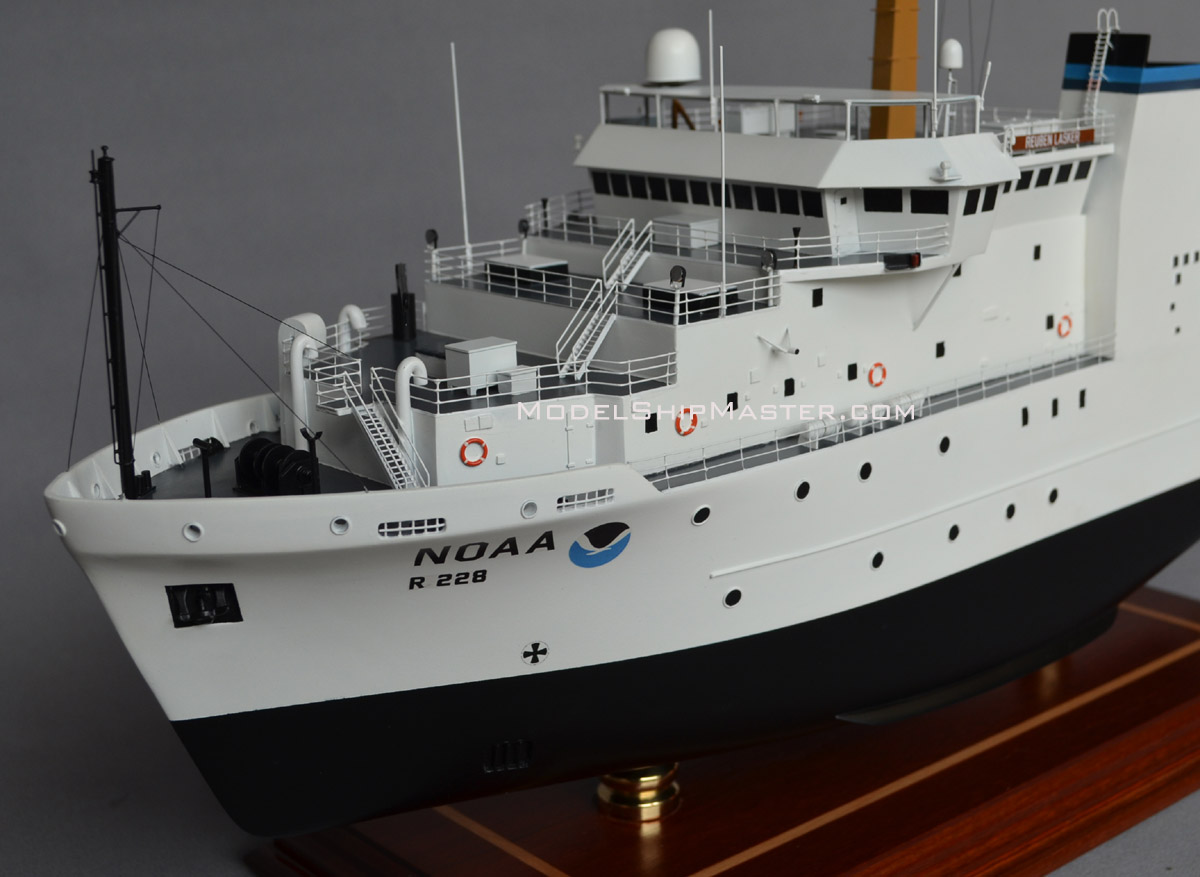
Reuben
Lasker
oceanographic hydrophones are mounted on a retractable
centerboard, or drop keel, that lowers scientific
transducers away from the region of hull-generated flow
noise, enhancing the quality of the data collected. To
take full advantage of these advanced data-gathering
capabilities, she has the Scientific Sonar System, which
can accurately measure the biomass of fish in a survey
area.
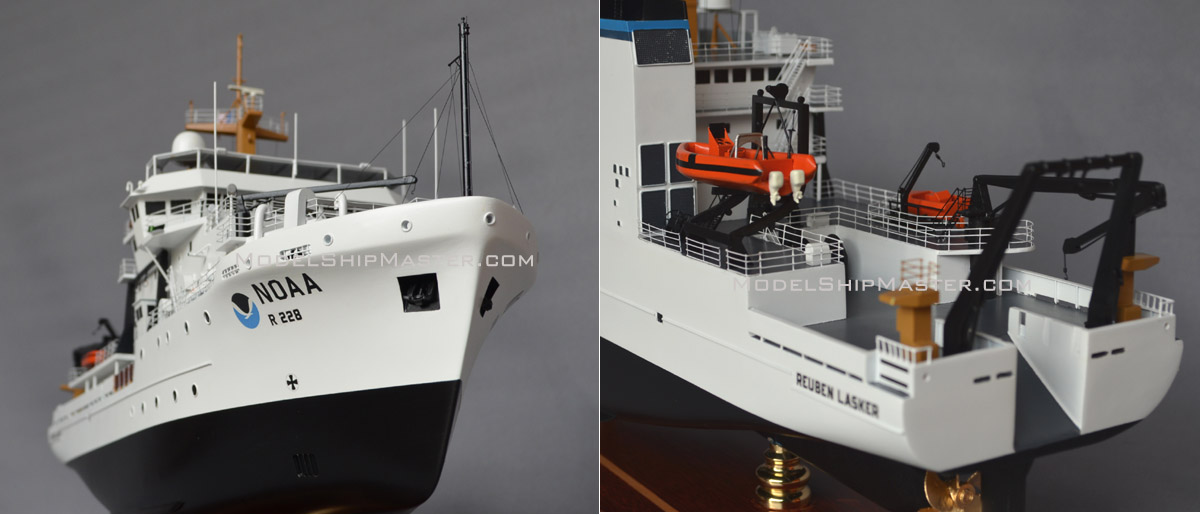
Reuben
Lasker's configuration allows her to have three
scientific packages ready for sequential operations. One
of her winches also can deploy lines and equipment over
her stern. In addition to trawling, her sampling
stations can deploy smaller sampling nets, longlines,
and fish traps. Her winches can deploy CTD instruments
to measure the electrical conductivity, temperature, and
chlorophyll fluorescence of sea water. Reuben Lasker
also can deploy specialized gear such as Multiple
Opening/Closing Net and Environmental Sensing System
frames, towed vehicles, dredges, and bottom corers, and
she can deploy and recover both floating and
bottom-moored sensor arrays.
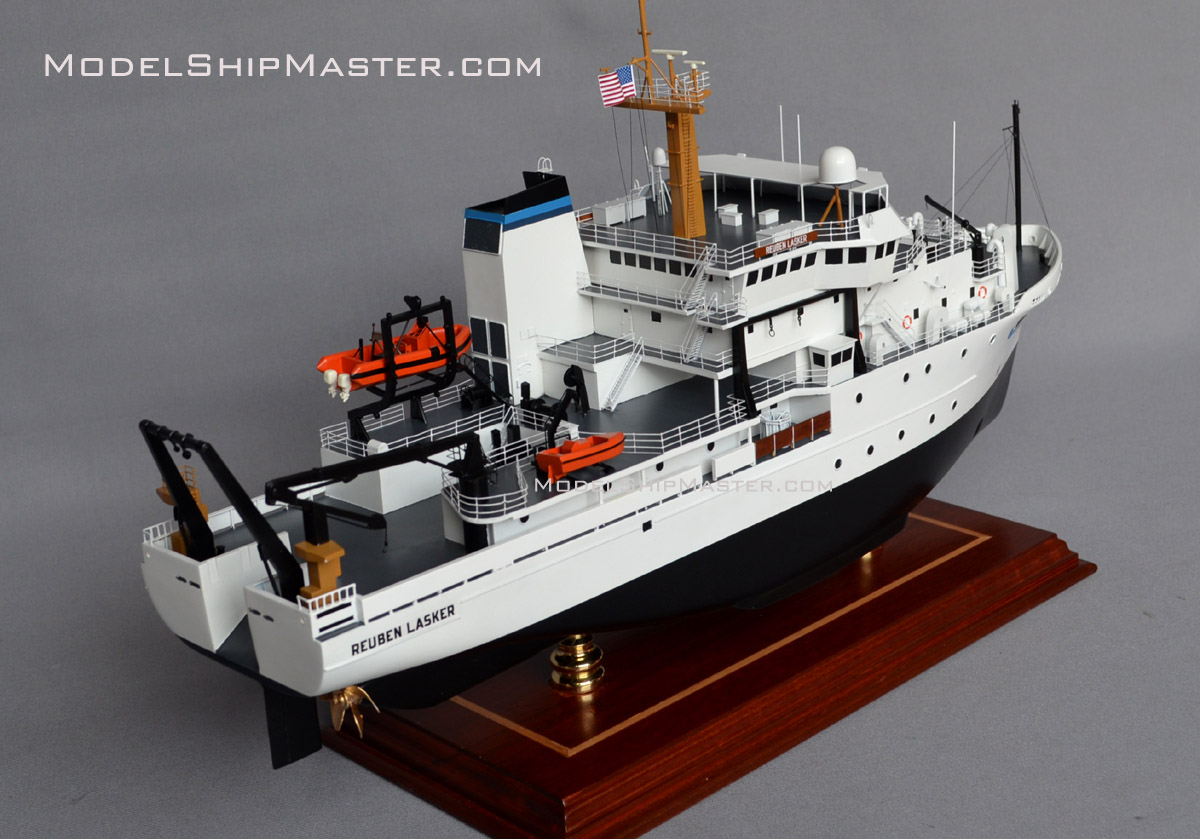
Reuben
Lasker has a 630-square-foot wet laboratory, a
300-sq.-ft. dry laboratory, a 287-sq.-ft. biology and
chemistry laboratory, a 445-sq.-ft. electronics and
computer laboratory, and an 85-sq.-ft. hydrographic
laboratory. All of her discharge pipes empty off her
port side so that fluids discharged will not contaminate
samples collected at the station on her starboard side.
She has an ice-strengthened hull for operations in polar
waters.
Reuben
Lasker carries a rigid-hulled inflatable
boat (RHIBs), with a 270-horsepower motor and a
capacity of 18 people, and a SOLAS-approved 15.5-foot
rescue boat with a 32-horsepower motor and a capacity of
six people.
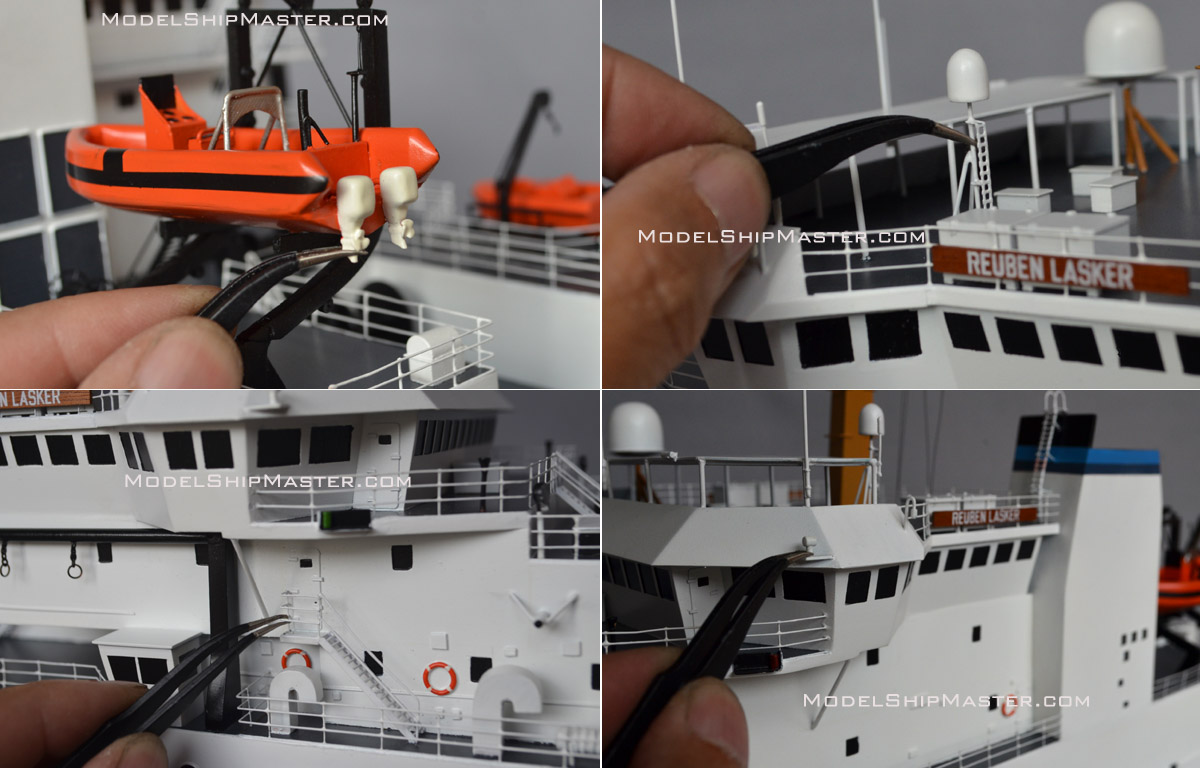
This primarily wood model
of the NOAA Reuben Lasker is 22" long x 14" tall x 6"
wide.
We build any NOAA ship
models, up to 10' long. For a quote, click on this link
to let us know of your preferences:
Custom models
Learn more about the
Reuben Lasker here:
https://www.omao.noaa.gov/learn/marine-operations/ships/reuben-lasker
|